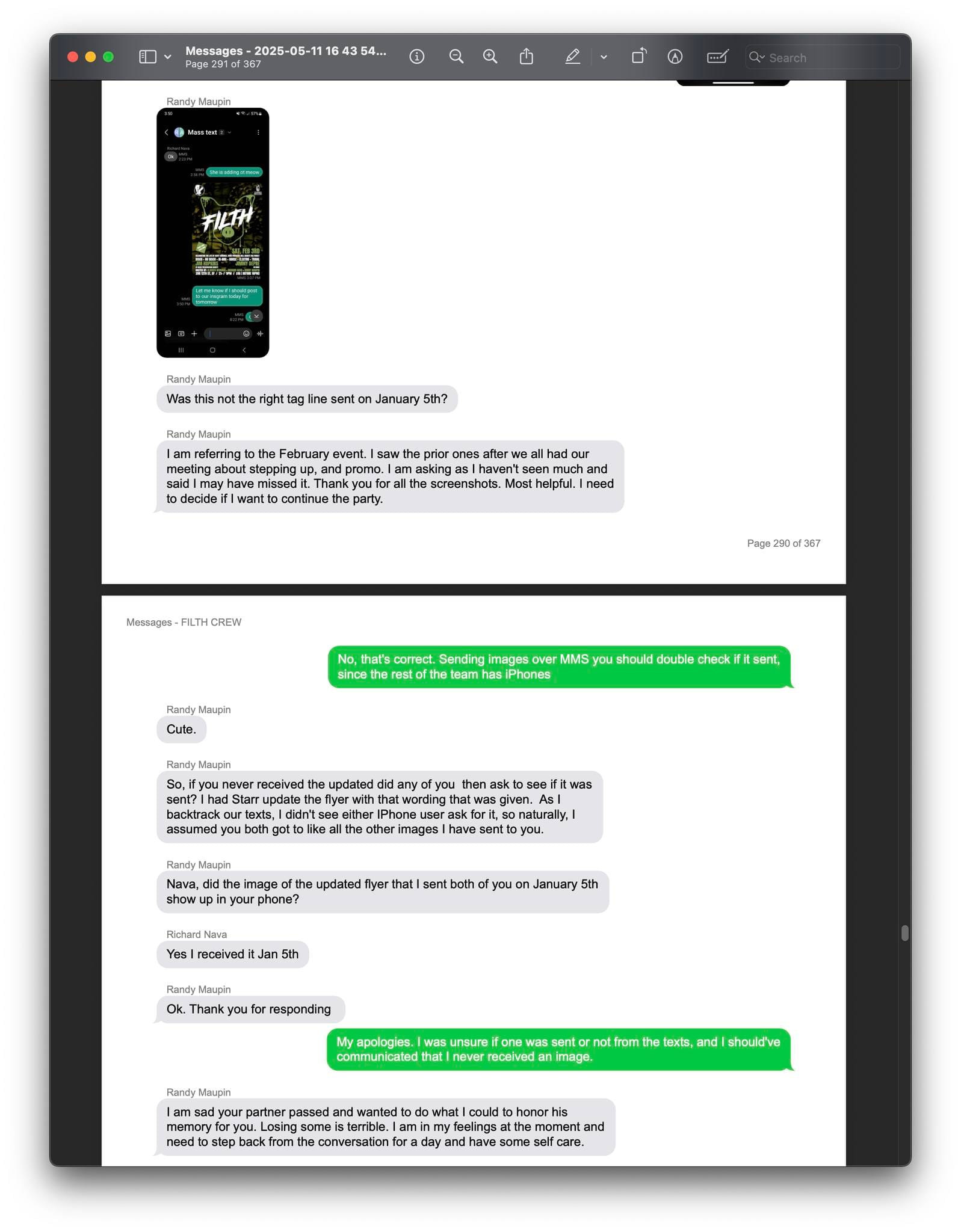7. When Self-Care Turns Toxic: How One Manager’s Mental Health Justifications Endangered Employees and an LGBTQ Landmark
This is Part 7 of a 7-part account of what happened to me — and to others who were directly affected.
It’s based on what we experienced, what we witnessed, and what we remember. When I describe what someone else did, I’m doing so honestly and carefully. I have documentation and support from others for the key parts. I’m not trying to harm anyone — I’m telling the truth about the harm we lived through.
At this point, we urgently need clarity and immediate action.
A full staff meeting, with EVERYONE, is essential—this can’t wait any longer. The owner must be informed directly: your Facebook, iMessage, and email accounts appear compromised. We need answers:
- Why does one manager have unilateral control over staff email accounts, blocking Gmail access for employees he personally dislikes?
- Why are shifts being reduced, employees sidelined, and discrimination going unchecked?
- Why has someone’s external decision—something openly described as “not my choice to make”—turned into months of torment for staff, seemingly for this manager’s own amusement?
- Why are clearly illegal workplace practices being tolerated, threatening not only employees but the entire business?
At this stage, I’m left to wonder if the owner’s personal accounts or devices, including his iPhone, may have been stolen or compromised. This situation is beyond unacceptable—it’s insane.
We need transparency. We need accountability. We need answers now.
While I was at the bar trying to catch Lex or Randy one weekday in May, a bartender shared an experience where Randy reportedly required him to remain available for a Sunday shift, a day he typically did not work, despite prior commitments. According to the bartender, Randy allegedly threatened termination if he didn’t keep the day open, only to inform him the day before that he wasn’t needed after all. While I cannot personally confirm this account, it aligns closely with my own experiences and seems consistent with Randy’s apparent difficulties with adaptability. It appeared Randy needed employees available—even if he didn’t ultimately schedule them—because someone being unavailable would disrupt his planning.
This pattern of behavior, if accurate, poses potential risks to me, other employees, and any establishment where Randy holds authority.
Randy consistently emphasizes the importance of his mental health, openly prioritizing it. However, his pattern of negatively reacting to situations requiring mediation, compromise, or adapting his viewpoint suggests deeper challenges. Instead of incorporating new information, he often responds with avoidance or withdrawal.
His coping mechanism seems to involve removing triggers—such as people, conversations, or feedback—that could prompt him to face his limitations. Yet this strategy shouldn’t be used as justification for actions that could endanger culturally significant businesses or violate employee rights, such as preventing reinstatement or communication.
Additionally, after instances of conflict or discrimination, Randy might attempt to reinforce a positive self-image through supportive actions—like publicly supporting a trans person or reinstating someone from bereavement leave. These gestures may appear beneficial, but they often seem designed more to reassure himself rather than genuinely support others, as failing to act would force him to confront the necessity for personal change.
When confronted by the victim of alleged transphobia, Randy reportedly felt threatened—not from empathy, but possibly due to concern about personal implications. If accurate, these defensive reactions may disregard established policies, applicable laws, and others’ wellbeing.
Given the mental health challenges Randy openly acknowledges, he might require reasonable accommodations to fulfill a managerial role effectively. This could involve assigning a liaison to handle situations that trigger his difficulty adapting, thereby presenting information in a more manageable format. Without these measures, his continued role in management poses significant liability risks to the businesses he oversees.
To conclude the February incident, where Randy expressed frustration about what he perceived as insufficient posts promoting my partner’s memorial. I responded by highlighting other relevant posts he had overlooked and reminded him about photos I had previously sent but that still hadn’t been uploaded. This feedback, though straightforward, appeared to stress Randy significantly, causing him to withdraw and reportedly even threaten to cancel the event altogether.
Randy concluded our exchange by stating:
“I am sad your partner passed and wanted to do what I could to honor his memory for you. Losing some is terrible. I am in my feelings at the moment and need to step back from the conversation for a day and have some self care.”


This is a personal account based on my direct experience and the experiences of others who were directly affected. Everything shared here reflects our understanding of events as they occurred. Where I describe others’ actions, I do so truthfully and to the best of my knowledge, with care and respect for those involved. Documentation and witnesses exist to support key claims. This is not intended to cause harm, but to speak honestly about harm I—and others—lived through.
Supporting documents are available upon request.


